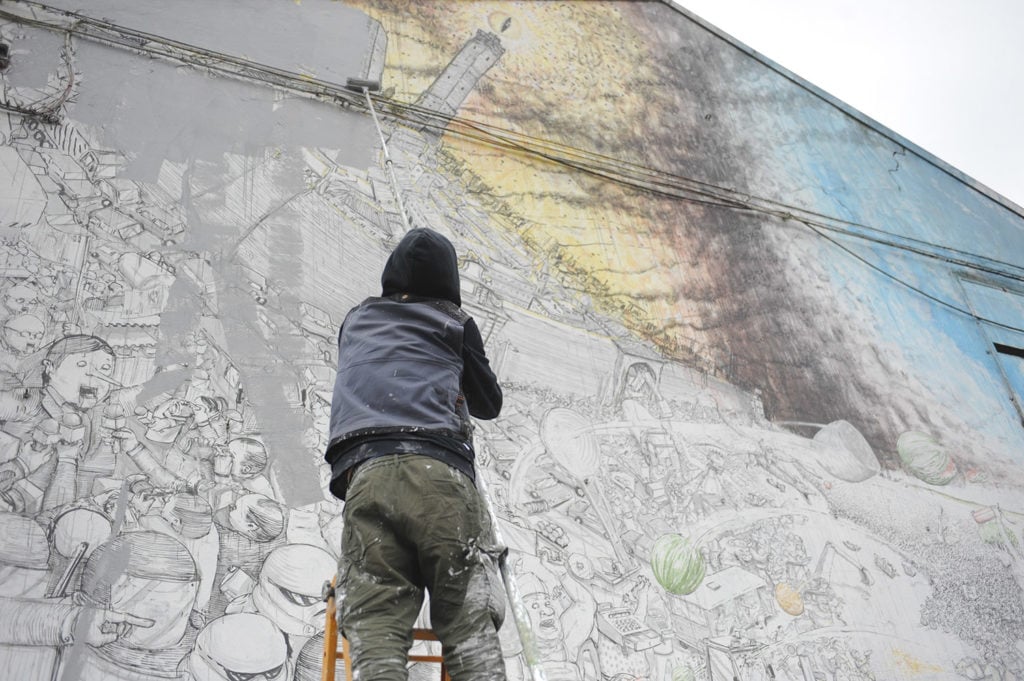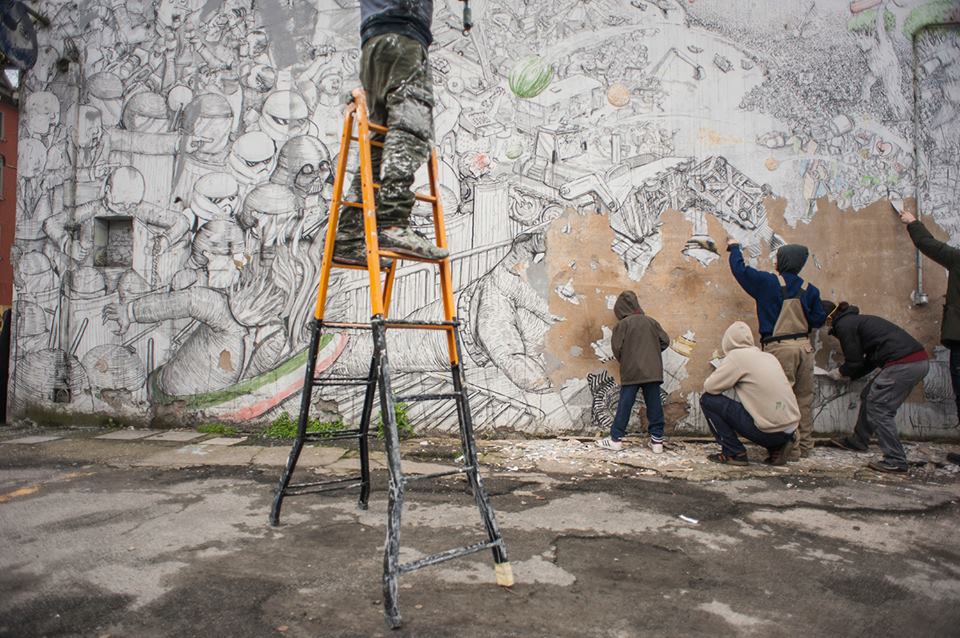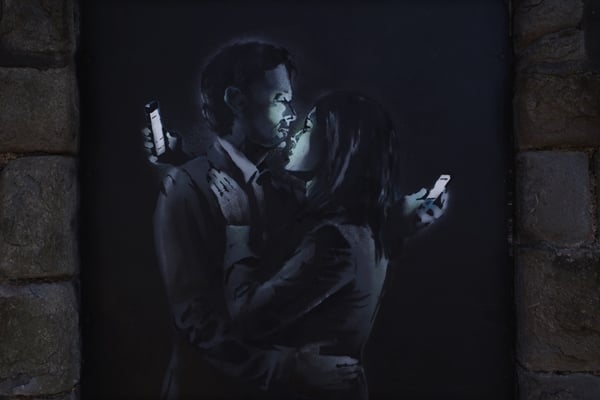Politics
Italian Street Artist Blu Destroys 20 Years of His Own Work to Protest Upcoming Exhibition
"The only thing left to do is making these paintings disappear," the artist wrote.

Photo: Blu.
"The only thing left to do is making these paintings disappear," the artist wrote.

Sarah Cascone

Italian street artist Blu spent the weekend systematically destroying every artwork he had painted on the streets of Bologna over the past 20 years. He covered all of his murals in gray paint in protest of the exhibition at Palazzo Pepoli, “Street Art: Banksy & Co,” which will feature some 250 street art works, including some of his own pieces, removed from their original public locations. The show will be on view at the historic space from March 18–June 26, 2016.
The murals scheduled for the exhibition were pulled off the streets with the intention of “salvaging them from demolition and preserving them from the injuries of time,” according to the press release. The show is organized by Fondazione Carisbo, a local bank foundation, and its former president, Fabio Roversi Monaco, president of the Accademia di Belle Arti.
“More than any other in Bologna’s recent history, Roversi Monaco’s name evokes power, money, politics… and the ensuing repressive policies,” explained a statement from the artist published by Wu Ming Foundation, a collective of left-leaning Italian authors. Blu also posted the missive at locations in Bologna where his artwork once stood.

Blu paintings over one of his murals in Bologna.
Photo: Blu.
“This exhibition will embellish and legitimize the hoarding of art taken off the street, which is only going to please unscrupled [sic] collectors and merchants,” Blu continued. “After having denounced and criminalized graffiti as vandalism, after having oppressed the youth culture that created them, after having evacuated the places which functioned as laboratories for those artists, now Bologna’s powers-that-be pose as the saviors of street art.”
The show also features the work of anonymous British street artist Banksy, who has been somewhat tongue-in-cheek in response to the sale of his work, and even supported a British boys club’s effort to auction off his Mobile Lovers in order to keep their doors open.
When the Sincura Arts Club held a London auction of his “sensitively salvaged” work in 2014, Banksy published a statement on his website: “This show has got nothing to do with me and I think it’s disgusting people are allowed to go around displaying art on walls without getting permission.”

Banksy, Mobile Lovers (2014).
Photo: Banksy.
Blu, on the other hand, is quick to condemn those who look to . “We are faced with arrogant landlords who act as colonial governors and think they’re free to take murals off our walls,” he wrote. “The only thing left to do is making these paintings disappear, to snatch them from those claws, to make hoarding impossible.”
This isn’t the first time Blu’s street art has been voluntarily removed. In December 2014, two of Blu’s best-known works, the beloved Kreuzberg murals in Berlin, created with JR and Lutz Henke, were scheduled to be torn down to make way for a new housing development. However, Henke took the trouble to erase the popular artworks, covering them “out of sorrow,” he wrote in the Guardian. “We felt it was time for them to vanish, along with the fading era in Berlin’s history [of the Berlin Wall] that they represented.”
Despite the recent actions by the artist, Blu’s politically-charged work can still be found throughout the world, from Rome and other cities in Europe to South America, Israel, and the US.